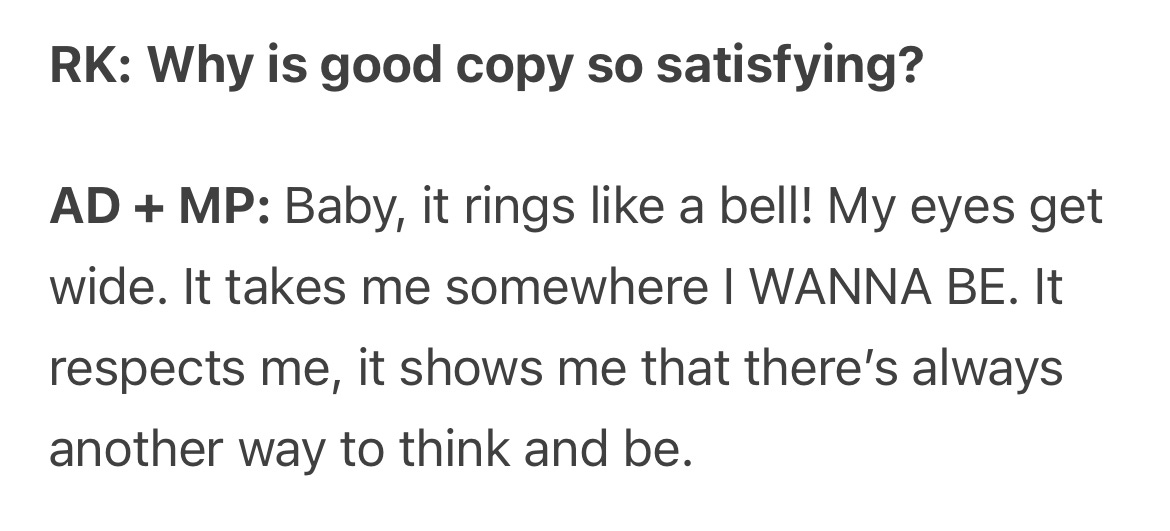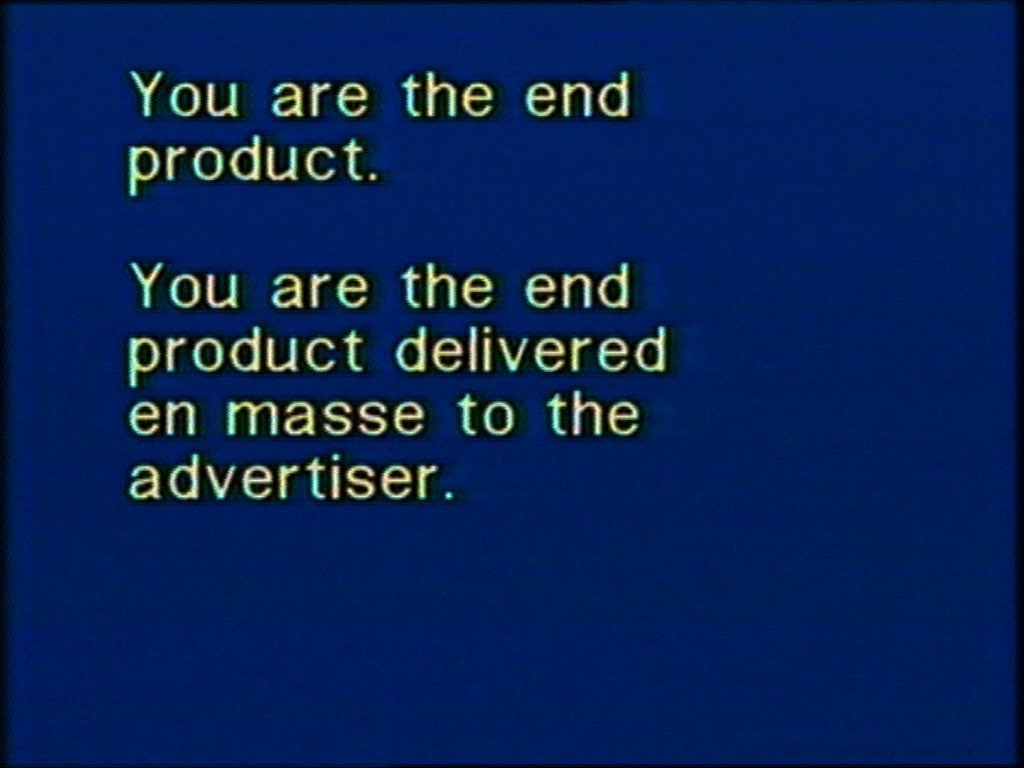Welcome to the very first official issue of Good Graf, a newsletter about design and writing. If it’s been a while since you signed up, I’m Carly, a writer and editor on Figma’s editorial team. Let’s dive in.
After spending the last few weeks trying (nearly) every AI-assisted, content-creating chatbot known to man, I have a few takeaways:
Observation can’t be outsourced
Aiming for average yields mediocrity
Robots can’t comprehend smart quotes/apostrophes
It beats a blank page
A large part of my work is talking to people and turning that into written pieces. A decade ago, I transcribed conversations as they happened, jotting down quotes and angles. With new tools, I “streamlined” my process: iPhone recordings, automated transcriptions, AI summaries. I noted timestamps, but eventually relied solely on my tech stack, thinking that focusing more on the conversation would lead to a better output. While this may have been true short-term, I soon faced a daunting pile of transcriptions and only a vague sense that something had been interesting…but what was it again?
It’s no coincidence that “smooth brain” has risen in cultural aspiration alongside my explorations in automation. Just as thinking became harder, a host of tools emerged promising to “unlock knowledge” and “skip busywork.” Very tempting compared to the agony of a blank page. But just as fear is the mind-killer, AI may be the interest-killer. By delivering the common denominator, it’s almost always boring. (The most exciting bits are when it screws up and, increasingly, it can’t even do that.) Which is not to say that it’s not good for writing—there are plenty of things I write that can be outsourced to AI. But not everything.
Knowing what you’re looking for is part of the challenge. What is good? What is interesting? That part of the work is taste. “Taste is what enables designers to navigate the vast sea of possibilities that technology and global connectivity afford, and to then select and combine these elements in ways that, ideally, result in interesting, unique work,” writes Elizabeth. Last week, my wonderful coworker, Jenny, transcribed an interview in real-time and said it made her “feel alive.” I’m trying to tap into that feeling.
What does it mean to have good taste in the age of AI? After all, we’re living in the taste economy (and have been for at least a year, by the timestamp). Meaning and point of view are essential for anything worthy of our attention. It’s about a sense of purpose and personality that goes beyond mere information transmission. It’s about paying attention, and not outsourcing observation. In a world increasingly populated by auto-generated content, the combination of substance and style will rise above.
Reading
I’ve been thinking a lot about AI, software, taste, when I stumbled upon this thread from Joseph, and then Daisy captured it well here.
Kim Kardashian bought bootleg Judd and now her design agency is getting sued. Shade from the Whitney. (Emily Sundberg breaks it down.)
Delia launched a pop-up blog for haters. Delicious!
I can’t wait to ready Worry by Alexandra Tanner. Looks excellent.
John Maeda’s Design in Tech Report is back (slides,video), and it will make you question your life choices. (Not me, though, as I have no regrets.)
Rachel Karten chatted with copywriting duo FONZIE, who emphasize building trust, being clear, and staying interesting. Good copy, they argue, is like a familiar voice that people want to hear more from:
We lived long enough to “witness long utilized methods of public misinformation crumble from the most basic digital forensics” and were reminded yet again of the dangers of hopping on the internet bandwagon. (See also: I hope you all feel terrible now.)
Joe Holder reminds us of the difference between good and great copywriting, saying that “these are the areas where taste matters.”
Designers are having an identity crisis. Did we overhype ourselves?
Fashion ads are moving out of the home and into the office.
Dirt and Are.na launched a newsletter about scent and memory with an all-star lineup. The first piece is perfect and by Meg Miller. From the Are.na board:
On the nose: A lovely, bizarre profile of the “mad perfumers of Parma.”
Pitching
Alex is looking for pitches for the new print edition of Saveur.
Matt is looking for “scenes, trends, and any niche stuff” for Paste’s music section.
Daisy is looking for culture pitches for British GQ.
Ryan is looking for “fun/weird/silly/thought-provoking ideas” for SPIN.
MotherJones is commissioning online features and magazine stories.
Louise is looking for long, quality features for Business Insider
Sarah is calling all writers who like camping, backpacking and gear for REI.
Leah is looking for disinfo, online extremism and conspiracies, tech legislation, influencers and grifters, AI in politics, and more for WIRED.
Maria Gracia is looking for workplace trends, AI, etc for Careers at Forbes.
Jobby-jobs
Duolingo is hiring a Senior Content Designer (Pittsburgh). You’d write those (in)famous practice reminders and drive their content strategy.
Apple is hiring a UX Writing Editor-in-Chief and a Communications Specialist (Cupertino).
IBM is hiring a Senior technical content creator and Senior content strategist (New York).
Google is looking for a Principal Strategist and Storytelling Lead (Sunnyvale), and a Senior UX Writer and Content Designer.
Wayfair is hiring a Copywriter to join their in-house creative agency.
The Isamu Noguchi Foundation is seeking a Communications Manager.
Figma is hiring a Brand Designer and Motion Designer for their Brand Studio, and we’re looking for freelance writers. Come work with me!
I don’t know how often I’ll do these, as it took me four years to get this first one out, but let’s see. Reply back to this email and let me know what you think. Actually, respond anyway—even with just a “hi”—to make sure this doesn’t end up in your spam. (Tragic!)
—Carly








